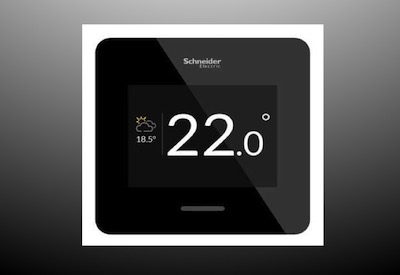Shipments of Smart Thermostats Forecast to Reach 20 Million by 2023

May 31, 2016
Worldwide shipments of communicating and smart thermostats are expected to grow from 926,000 annually in 2014 to 19.2 million by 2023, according to a new report from Navigant Research. The report analyzes the global market opportunities for communicating and smart thermostats, including global forecasts for unit shipments, average selling prices, revenue, and penetration rates.
First introduced in the late 2000s, smart thermostat technology has only recently gained real traction among customers. During the last year, the market for communicating and smart thermostats has expanded rapidly, with new offerings from several high-profile providers.
“In North America and Europe, interest in smart thermostat technology is growing among utilities and energy retailers, as well as consumers,” says Lauren Callaway, research analyst with Navigant Research. “In addition, small businesses are increasingly adopting solutions originally intended for residences as a low-cost way to manage energy use of HVAC systems.”
Amid a wide spectrum of offerings, three main technology segments have emerged, according to the report:
- communicating thermostats
- smart thermostats
- software and services
Global revenue for communicating and smart thermostats and associated software and services is expected to grow from US$1.1 billion in 2016 to US$4.4 billion in 2025.
Distribution channels vary. Telecommunications and broadband service providers, home security companies, and heating, ventilating, and air conditioning (HVAC) installers are racing to incorporate advanced thermostats into their solutions. Software and services, especially those that are cloud-based, have become a vital part of these more intelligent thermostats, providing data-based insights and opportunities that increase the value of these devices.
Because these devices and software have varying degrees of capability for a range of functions — controlling temperature, analytics and automation, connectivity to home area networks, responding to utility pricing signals (e.g., time-of-use and demand response), and accessing cloud-based services — they appeal to multiple customer segments, not just end users.
The report, “Smart Thermostats,” analyzes the global market opportunities for communicating and smart thermostats. It provides an analysis of the market issues, including the current market drivers, inhibitors, and business segments, utility and vendor activity, and broad industry trends, associated with communicating and smart thermostats. Global market forecasts for unit shipments, average selling prices, revenue, and penetration rates, as well as revenue for associated software and services, extend through 2023. The report also examines the key technologies related to communicating and smart thermostats and profiles the major industry players.
Find out more: http://www.navigantresearch.com/research/smart-thermostats.















